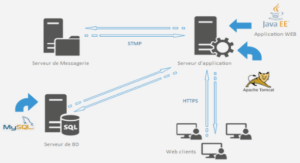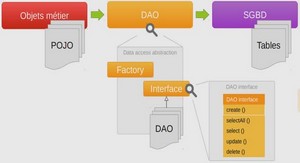Image compression in wireless multimedia sensor networks
The compression process is unavoidable step for the optimization of high volume of information. The main objective of image compression is to reduce a large amount of data without sacrificing the visual representation of the original image. This objective is achievable with the exploitation of the image redundancy. This redundancy could be spatial (correlation between pixels of one image), psycho-visual (data less perceptible to the human visual system) and spectral (spectral band). With the suppression of different sort of redundancies, compression and information loss will affects the reconstructed image quality. In this study, we are interested in lossy image compression to achieve high compression ratios. Hence, we will focus on different compression techniques based on orthogonal transformation. The first step in such compression is the transformation, which transforms the image from a spatial domain (temporal domain) to a frequency domain. Moreover, it is like a gateway to go through a spatial domain where the coefficients are correlated to a frequency domain where the neighborhood coefficients are totally decorrelated. Thus, the significant coefficients are compacted in low frequencies. The Discrete Cosine Transform (DCT) and the Discrete Wavelet Transform (DWT) are two transforms that are used in the well-known standards JPEG and JPEG2000 respectively. In this chapter we will focus our study on DCT and DWT based compression.We will concentrate on their characteristics in the context of WMSNs systems. In addition, a survey of research efforts to improve their energy efficiency is presented.
Image compression in wireless image sensor network
Image compression technique could be classified into two categories: lossless image compression and lossy image compression. Lossless image compression: It is a reversible compression. It allows a perfect reconstructed of the original image from the compressed one. Lossy compression: widely used in WMSNs, they allow only reconstruction of an approximation of the original image. In general, lossless compression techniques do two steps in sequence: the first step generates a statistical model for the input data, and the second step uses this latter to map Chapter 2: Image compression in wireless multimedia sensor networks 22 input data to bit sequences in such a way that « probable » (e.g. frequently encountered) data will produce shorter output code than « improbable » data. The first encoding algorithms used to produce bit sequences are the Huffman coder and the arithmetic coder. Arithmetic coding achieves compression rates close to the best possible for a particular statistical model, which is given by the information entropy, whereas Huffman coder is simpler and faster but produces poor results [33-34]. The lossy image compression techniques are divided into two categories: transformbased image compression [35]; like the DCT and the DWT, and the non transform-based algorithms such as the vectorial transformation [36] and the fractal compression [37]. In this study we will only focus on transform-based image compression. Figure2.1. Algorithm classification for image compression The majority of studies that have been applied in scalar sensor networks supposed that the cost of computation, including data acquisition and compression is insignificant compared to the cost of communication of the same data [38]. This assumption is available only in scalar sensor networks, where the cost of compression is negligible against the cost of communication, so the compression is gainful. In WMSNs, this assumption is not verified. The visual flux needs always compression. Actually, image compression is the perfect choice to do before transmission to gain in energy Chapter 2: Image compression in wireless multimedia sensor networks 23 and time. It is clear that some image compression algorithms consume a lot of time and energy than others. In general, these algorithms are used in storing, where no real time requirements is imposed. Such as, the majority of image compression algorithms: fractal compression, JPEG, JPEG 2000 requires a lot of execution time and energy. However, they give high image compression ratio when applied in traditional wired network contrarily when applied in WSNs.
Principles of image compression
Transform-based image compression has three main steps. The first one is the transformation, in this part; we pass from the pixel domain to the frequency domain in order to decorrelate image coefficients and to have energy compaction in low frequencies. The second step is the quantization or thresholding, the quantizer reduces the output of transformation part according to psychovisual criterion. This operation provides loss of information, so, it is irreversible and targets to remove irrelevant information from the image. When lossless compression is needed, quantizer must be removed. The final stage of the encoding process of image compression is the symbol or entropy encoding. In this part, the quantified data will be reduced for transmission goals. In order to reconstruct our image, the inverse operations will be provided in each step. The whole compression process is shown in figure 2.2. Figure.2.2. Image compression/ decompression model Transformation: The transformation decorrelates the input pixels. So, the choice of the transformation is very important factor in data and image compression. The well-known transformations used in this domain are: the Karhunen-Loeve Transform (KLT), The Discrete Fourier Transform (DFT), the Discrete Cosine Transform (DCT), the Chapter 2: Image compression in wireless multimedia sensor networks 24 Walsh Hadamard transform (WHT) and the Discrete Wavelet Transform (DWT). The KLT is the optimal transform that has the highest decorrelation of coefficients property; however, it has not a fast algorithm to do a real implementation. The DCT and The DWT are the widely used image compression algorithms [39]. Quantization and thresholding:The quantization step provides another representation of each coefficient after the transformation step according to the quantization table. The choice of the quantization table and the threshold is a relevant factor and it must takes on consideration the human visual system (HVS), in order to obtain a better quality and a high compression ratio [39-41]. In general, a standard quantization table is used in each compression technique. This step is irreversible and generates degradation in the quality and also a loss in image information. Entropy encoder:After the quantization and thresholding, the final stage of the encoding process is the entropy encoder, which generates a fixed or variable-length code to represent the output of the quantization step. Usually the shortest code words are assigned to the most frequently occurring quantizer output values to minimize coding redundancy. For a reliable transmission, the quantified data will be reduced significantly. This operation is reversible, the most used methods are: Huffman coding [42], arithmetic coding [43] and Golomb coding [44]. According to the transformation type, the most used transformations are JPEG standard based DCT; JPEG2000 and SPIHT standards based DWT.
DCT-based compression
JPEG is the acronym of Joint Photographic expert group. It is the most popular and widely used DCT-based compression algorithm for images. It has user-adjustable compression ratio with an acceptable to a good reconstruction quality. It has lower computational complexity for widespread practical applications. Discrete cosine transform (DCT) [45] is used as the transform in the JPEG standard. According to [46] JPEG defines four modes of operations: • Sequential lossless mode: It compresses the image into a single scan and the decoded image is an exact replica of the original image. • Sequential DCT-based mode: It compresses the image into a single scan using DCT-based lossy compression technique. Therefore, the decoded image is an approximation of the original image. This Mode is also called as JPEG baseline mode and it is the widely used. Chapter 2: Image compression in wireless multimedia sensor networks 25 • Progressive DCT-based mode: It compresses/decompresses the image in multiple scans. Each successive scan produces better quality image. • Hierarchical mode: It compresses the image at multiple resolutions for display on different devices. In the following section, we will present sequential encoding, which is the base of the other modes. We will adopt the widely used JPEG baseline for an 8 x 8 partitioning. Sequential encoding: In JPEG compression, the image source is first partitioned into blocks of pixels and each block is coded independently from left to right and from top to bottom [47]. After the Discrete Cosine Transform (DCT), each block of 64 DCT coefficients is uniformly quantized by a quantization table. After that, all of the quantized coefficients are ordered into a zigzag sequence, such that low-frequency coefficients are to be processed prior than high-frequency coefficients. After that, Huffman coding will be applied in order to prepare the symbols to a reliable transmission. Finally, for image reconstruction, the inverse operations will be provided in each step.





